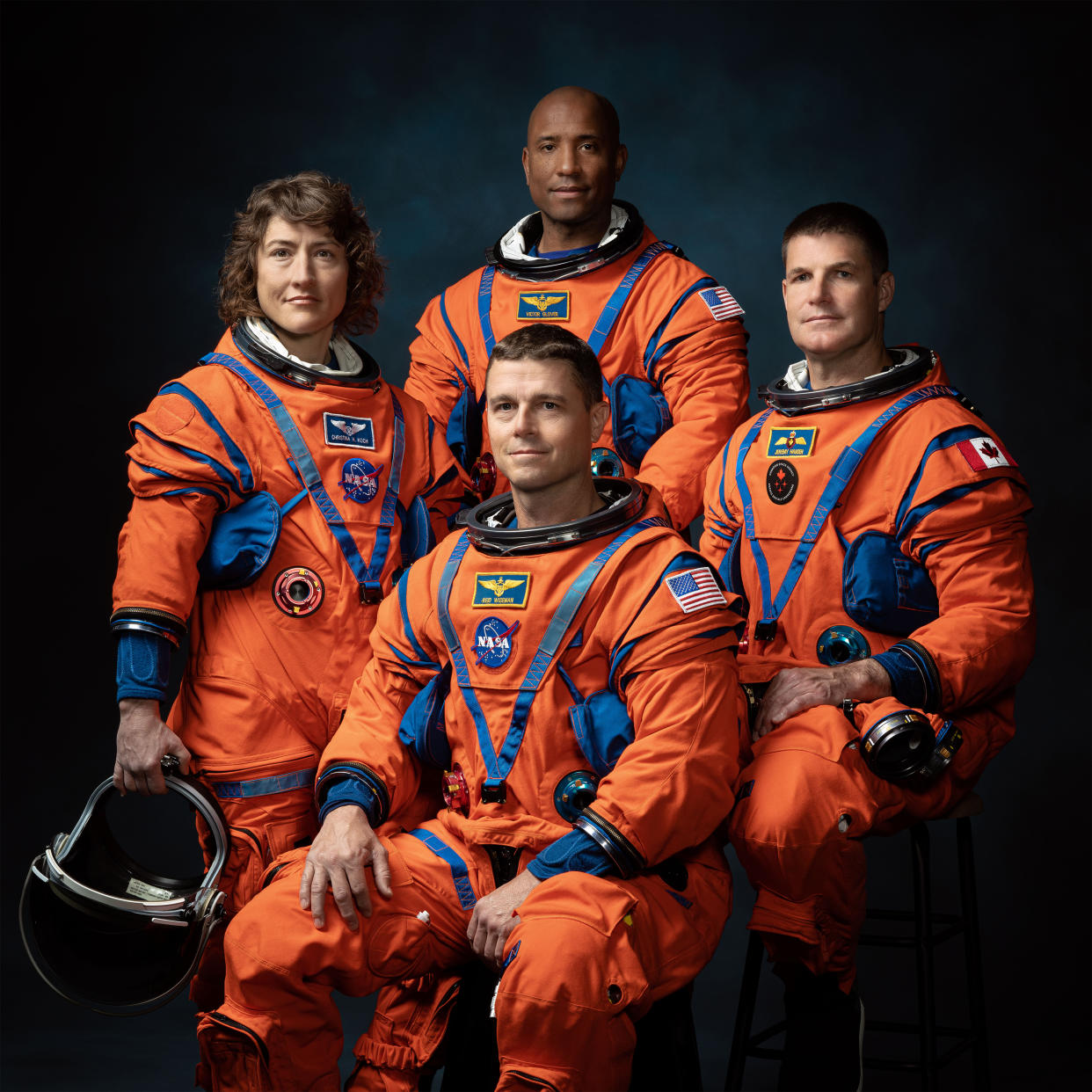NASA announces Artemis II astronauts who will fly around the moon: Here's everything we know
NASA and the Canadian Space Agency on Monday revealed the names of astronauts who will fly to the moon as part of the Artemis II mission.
The four-member crew includes three NASA astronauts — Christina Koch, Victor Glover and Reid Wiseman — and one, Jeremy Hansen, from Canada. Among them are the first woman and the first Black person to crew a moon mission.
They will be the first humans to fly to the vicinity of the moon in more than 50 years.
“This is humanity’s crew,” NASA Director Bill Nelson said, standing with officials from both space agencies at a splashy announcement event at NASA’s Johnson Space Center in Houston.
Here’s everything we know about the astronauts and their mission.
Who are the crew members?

• Christina Koch, mission specialist
The 44-year-old from Grand Rapids, Mich., who got her start at NASA’s Goddard Space Center, will be the first woman to orbit the moon. She already made history by logging the longest continuous spaceflight by a woman (328 days) and took part in the first all-woman space walk in 2019.
• Victor Glover Jr., pilot
Glover, 46, from Pomona, Calif., is a former Navy captain who most recently served as pilot and second-in-command on the SpaceX Crew Dragon in 2021. He will be the first Black man to fly on a moon mission.
“This is a big day,” Glover said.
• G. Reid Wiseman, mission commander
Wiseman, who is 47 and from Baltimore, served as a flight engineer in 2014 aboard the International Space Station on a 165-day mission — his first spaceflight.
• Jeremy Hansen, mission specialist
Hansen, a 47-year-old from Ontario, is the only non-American crew member — a fact of which he is keenly aware.
“It is not lost on any of us that the United States could choose to go back to the moon by themselves,” Hansen said Monday. “But America has made a very deliberate choice over decades to curate a global team — and that in my definition is true leadership.”
[Also read: Americans want to lead in space but don’t love the price tag]
“I could not be prouder that these brave four will kick-start our journeys to the moon and beyond,” said Norm Knight, director of flight operations at the Johnson Space Center. “They represent exactly what an astronaut corps should be: a mix of highly capable and accomplished individuals with the skills and determination to take on any trial as a team.”
What is their mission?
According to NASA, the mission of the Artemis II will be to test the “foundational human deep space capabilities” of the Space Launch System rocket and the Orion spacecraft with a crew on board.
The 10-day trip, slated to begin no earlier than the end of 2024, will intentionally “stress the Orion spacecraft’s life-support systems to prove the capabilities and techniques required to live and work in deep space in ways only humans can do.”
They won’t land on the moon during this mission, but if all goes well their work will pave the way for a touchdown by a subsequent crew.
Is NASA still planning to go to Mars?
That’s the plan.
NASA says the Artemis II mission is a part of its vision for future deep space exploration — what the agency has dubbed the “moon to Mars” exploration approach.
“It’s a demonstration of our ability to push the boundaries of human achievement,” Nelson said. “It's a testament to the unwavering passion of the team that will make it possible. And it’s a message to the world: We choose to go back to the moon and then on to Mars.”
“It is the next step on the journey that gets humanity to Mars,” Glover added. “And we understand our role in that.”

